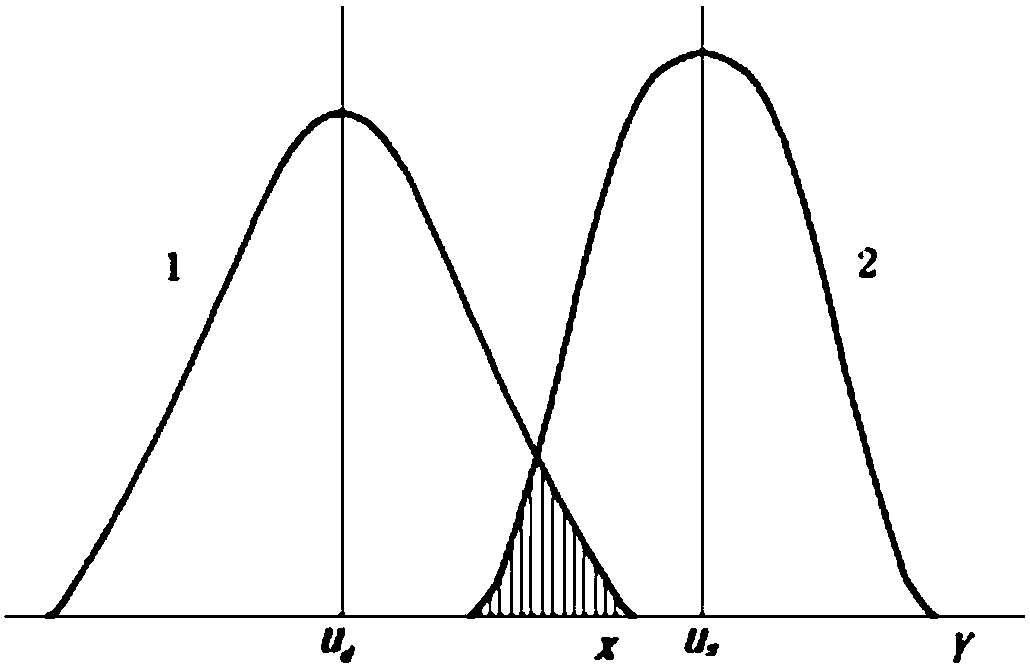An Evaluation Method of Explosive Charge Penetration Stability Based on Equivalent Model Experiment
An equivalent model and model experiment technology, applied in the direction of measuring devices, using mechanical devices, using stable tension/pressure to test the strength of materials, etc., can solve the problem of high research costs, long periods, and non-equivalence of explosive charges and other issues, to achieve the effect of low research cost, high cost performance and short cycle
- Summary
- Abstract
- Description
- Claims
- Application Information
AI Technical Summary
Problems solved by technology
Method used
Image
Examples
Embodiment 1
[0064] In this embodiment, the warhead filled with high-energy explosives penetrates a 6-meter-thick reinforced concrete target at a speed of 900 m / s.
[0065] Step 1: Acquisition of dynamic mechanical properties and thermophysical properties of explosive charges
[0066] The explosive charge was tested at a strain rate of 3200s using a separate Hopkinson pressure bar -1 , 3700s -1 The dynamic mechanical performance parameters at 4300 and 4300, the stresses are 25.6MPa, 28MPa and 30MPa respectively, and the strains are 1.9%, 2.4% and 2.8%, respectively.
[0067] According to the method 405.1, method 408.2 and method 409.2 in GJB772A-97, the specific heat capacity, linear expansion coefficient and thermal conductivity of the explosive charge are respectively: 1.327J / g / ℃, 9.1(10 -5 K -1 ) and 1.21W / (m·K).
[0068] Step 2: Determine the maximum compressive load and friction load experienced by the explosive charge penetration process
[0069] Using the commercial software LS...
Embodiment 2
[0078] In this embodiment, a 500kg-class warhead loaded with high-energy explosive penetrates a 30mm thick steel target at a speed of 700m / s. The device and steps used for evaluating the penetration stability of the explosive charge are the same as in Embodiment 1.
[0079] Explosive charges at a strain rate of 3000s -1 、3500s -1 The dynamic mechanical performance parameters at 4100 and 4100, the stresses are 28.6MPa, 35MPa and 41MPa respectively, and the strains are 1.9%, 1.8% and 1.6%, respectively. The specific heat capacity, linear expansion coefficient and thermal conductivity of the explosive charge are: 1.245J / g / ℃, 8.2(10 -5 K -1 ) and 0.77W / (m·K).
[0080]The LS-DYNA calculation results show that the maximum compressive stress on the explosive charge is 800MPa, the stress rise time is about 40us, that is, the stress rate is 20MPa / us, and the maximum frictional power density is 3.2×10 7 w / m 2 .
[0081] In the equivalent strengthening model test, strengthening exp...
PUM
 Login to View More
Login to View More Abstract
Description
Claims
Application Information
 Login to View More
Login to View More - R&D
- Intellectual Property
- Life Sciences
- Materials
- Tech Scout
- Unparalleled Data Quality
- Higher Quality Content
- 60% Fewer Hallucinations
Browse by: Latest US Patents, China's latest patents, Technical Efficacy Thesaurus, Application Domain, Technology Topic, Popular Technical Reports.
© 2025 PatSnap. All rights reserved.Legal|Privacy policy|Modern Slavery Act Transparency Statement|Sitemap|About US| Contact US: help@patsnap.com



